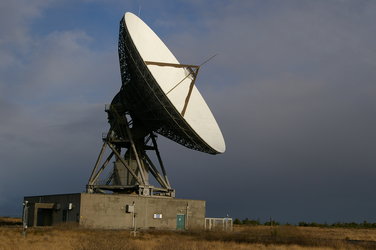Accept all cookies Accept only essential cookies See our Cookie Notice

About ESA
The European Space Agency (ESA) is Europe’s gateway to space. Its mission is to shape the development of Europe’s space capability and ensure that investment in space continues to deliver benefits to the citizens of Europe and the world.
Highlights
ESA - United space in Europe
This is ESA ESA facts Member States & Cooperating States Funding Director General Top management For Member State Delegations European vision European Space Policy ESA & EU Space Councils Responsibility & Sustainability Annual Report Calendar of meetings Corporate newsEstablishments & sites
ESA Headquarters ESA ESTEC ESA ESOC ESA ESRIN ESA EAC ESA ESAC Europe's Spaceport ESA ESEC ESA ECSAT Brussels Office Washington OfficeWorking with ESA
Business with ESA ESA Commercialisation Gateway Law at ESA Careers Cyber resilience at ESA IT at ESA Newsroom Partnerships Merchandising Licence Education Open Space Innovation Platform Integrity and Reporting Administrative Tribunal Health and SafetyMore about ESA
History ESA Historical Archives Exhibitions Publications Art & Culture ESA Merchandise Kids Diversity ESA Brand Centre ESA ChampionsLatest
Space in Member States
Find out more about space activities in our 23 Member States, and understand how ESA works together with their national agencies, institutions and organisations.
Science & Exploration
Exploring our Solar System and unlocking the secrets of the Universe
Go to topicAstronauts
Missions
Juice Euclid Webb Solar Orbiter BepiColombo Gaia ExoMars Cheops Exoplanet missions More missionsActivities
International Space Station Orion service module Gateway Concordia Caves & Pangaea BenefitsLatest
Space Safety
Protecting life and infrastructure on Earth and in orbit
Go to topicAsteroids
Asteroids and Planetary Defence Asteroid danger explained Flyeye telescope: asteroid detection Hera mission: asteroid deflection Near-Earth Object Coordination CentreSpace junk
About space debris Space debris by the numbers Space Environment Report In space refuelling, refurbishing and removingSafety from space
Clean Space ecodesign Zero Debris Technologies Space for Earth Supporting Sustainable DevelopmentApplications
Using space to benefit citizens and meet future challenges on Earth
Go to topicObserving the Earth
Observing the Earth Future EO Copernicus Meteorology Space for our climate Satellite missionsCommercialisation
ESA Commercialisation Gateway Open Space Innovation Platform Business Incubation ESA Space SolutionsLatest
Enabling & Support
Making space accessible and developing the technologies for the future
Go to topicBuilding missions
Space Engineering and Technology Test centre Laboratories Concurrent Design Facility Preparing for the future Shaping the Future Discovery and Preparation Advanced Concepts TeamSpace transportation
Space Transportation Ariane Vega Space Rider Future space transportation Boost! Europe's Spaceport Launches from Europe's Spaceport from 2012Latest

Cool upgrade for deep-space dish
Thank you for liking
You have already liked this page, you can only like it once!
ESA’s deep-space communication station in Spain has received a ‘cool’ new upgrade.
The ‘antenna feed’ connecting the physical Ka-band antenna to the station’s electronic signal transmitter and receiver is now being cooled to -263°C. That’s just 10 degrees above the coldest temperature possible in the Universe.
Cryocooling the feed reduces ‘thermal noise’ – background interference that limits the sensitivity and data transfer rate of our antennas.
ESA can now download up to 100% more science data from its increasingly complex science missions, with a boost of up to 80% for deep-space missions like Juice and BepiColombo.
This photo shows the cryocooled technology undergoing a ‘noise temperature’ test onsite at its manufacturer, Callisto.
The upgrade is part of a series taking place at the three deep-space stations in ESA’s ‘Estrack’ network, located in New Norcia (Australia), Cebreros (Spain) and Malargüe (Argentina).
“With these upgrades, ESA is pushing the limits of what’s technically possible and enabling scientists to explore new worlds and gather unprecedented amounts of data,” says Stéphane Halté, ESA ground station engineer.
Estrack is one of only two global deep-space antenna networks on Earth and is a cornerstone of ESA’s international collaboration.
ESA missions and those of partner agencies such as NASA, JAXA and ISRO, as well as those of private companies, rely on Estrack to provide the vital communication link between mission control and distant spacecraft.
Demand for Estrack support is high, so ESA is constructing a second antenna in Australia and squeezing out maximum performance from its existing antennas by deploying new technologies such as cryocooled antenna feeds.
Click here for more info on these upgrades. Click here for more info on the companies involved and the potential for technology transfer to applications such as quantum computing.
-
CREDIT
ESA / S. Halté -
LICENCE
ESA Standard Licence

Cryo-cooled antenna feed upgrade for ESA's deep spac…

Cool communication in deep space

Goonhilly

Reflecting on deep space















 Germany
Germany
 Austria
Austria
 Belgium
Belgium
 Denmark
Denmark
 Spain
Spain
 Estonia
Estonia
 Finland
Finland
 France
France
 Greece
Greece
 Hungary
Hungary
 Ireland
Ireland
 Italy
Italy
 Luxembourg
Luxembourg
 Norway
Norway
 The Netherlands
The Netherlands
 Poland
Poland
 Portugal
Portugal
 Czechia
Czechia
 Romania
Romania
 United Kingdom
United Kingdom
 Slovenia
Slovenia
 Sweden
Sweden
 Switzerland
Switzerland

























